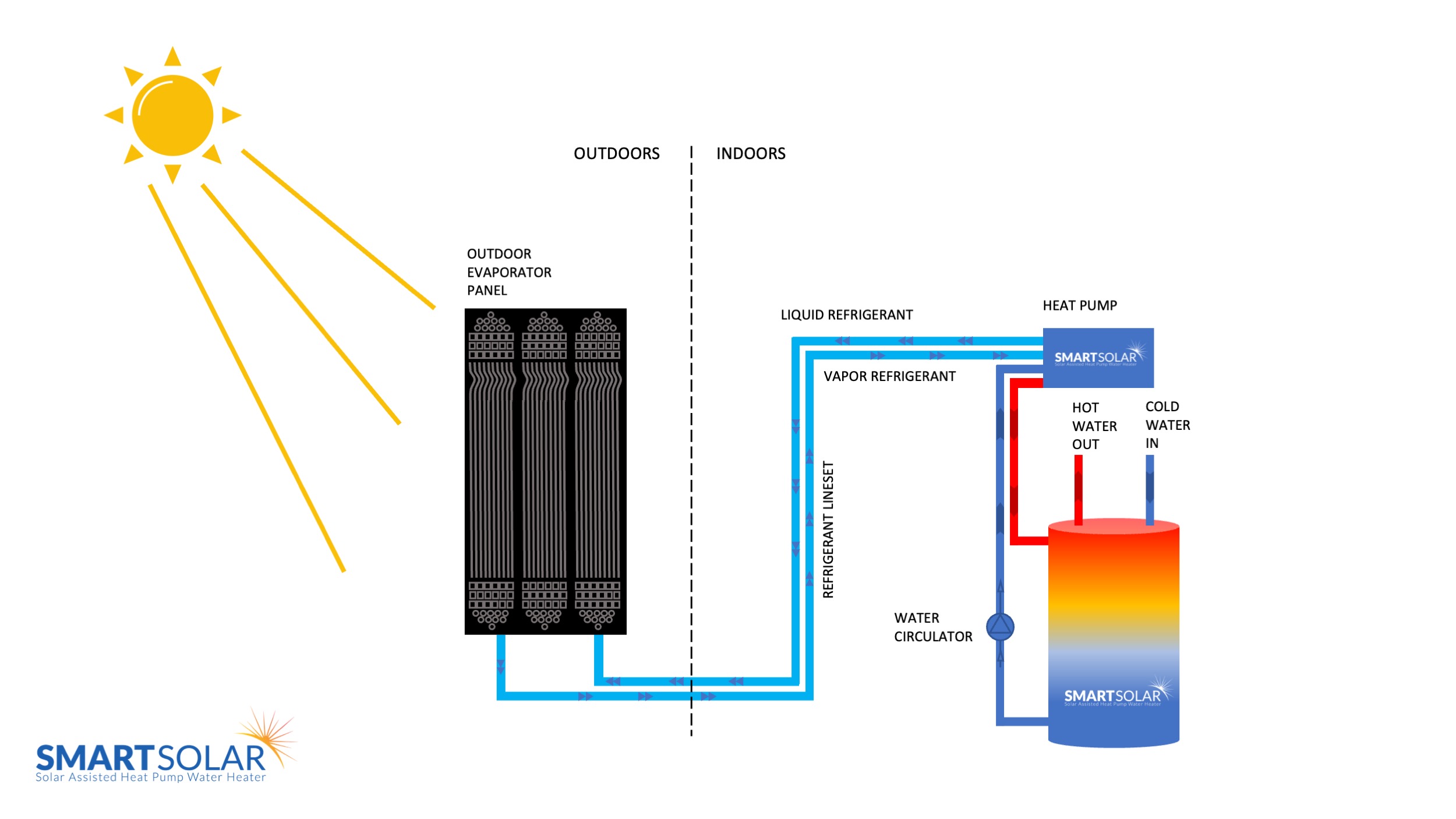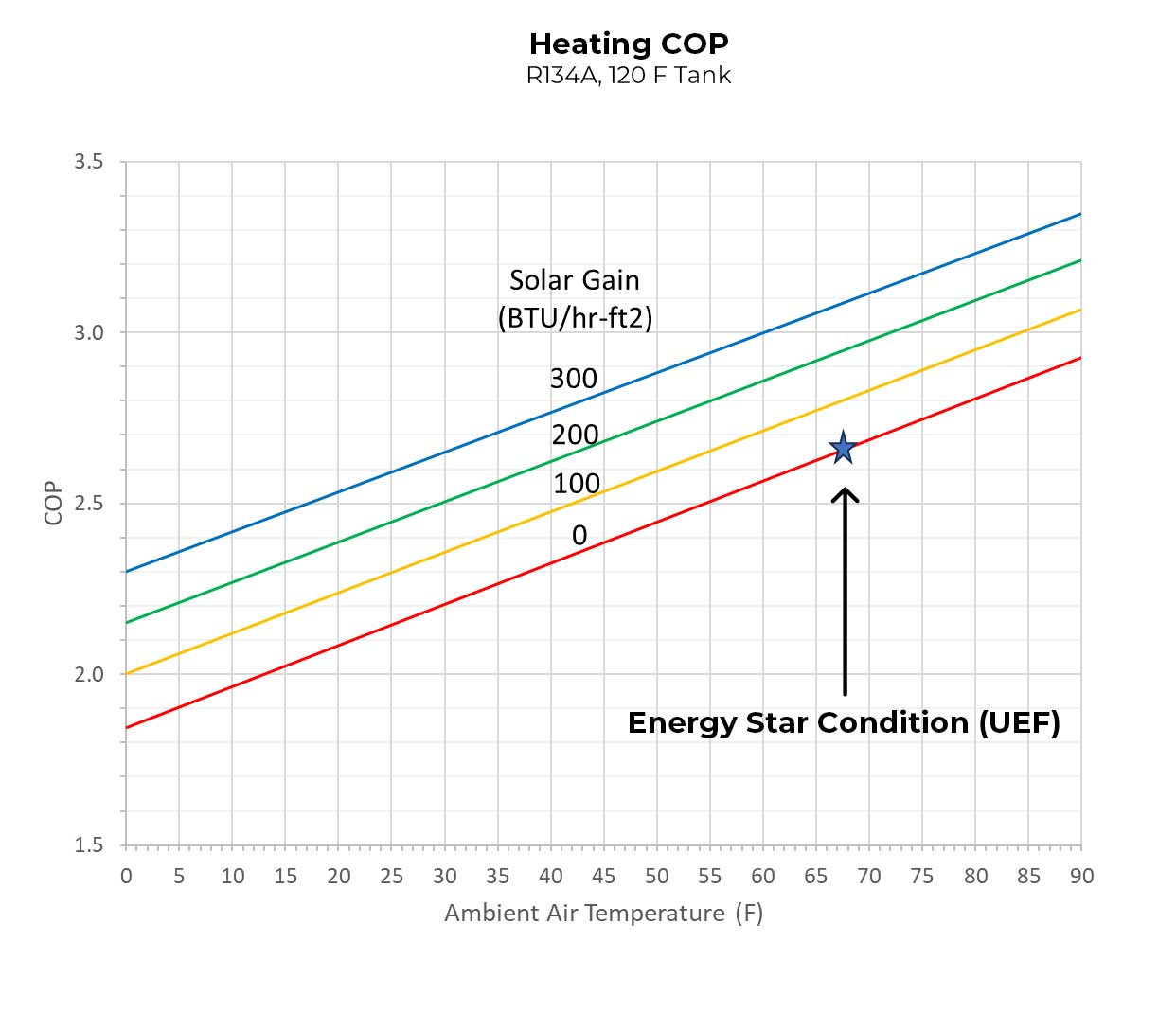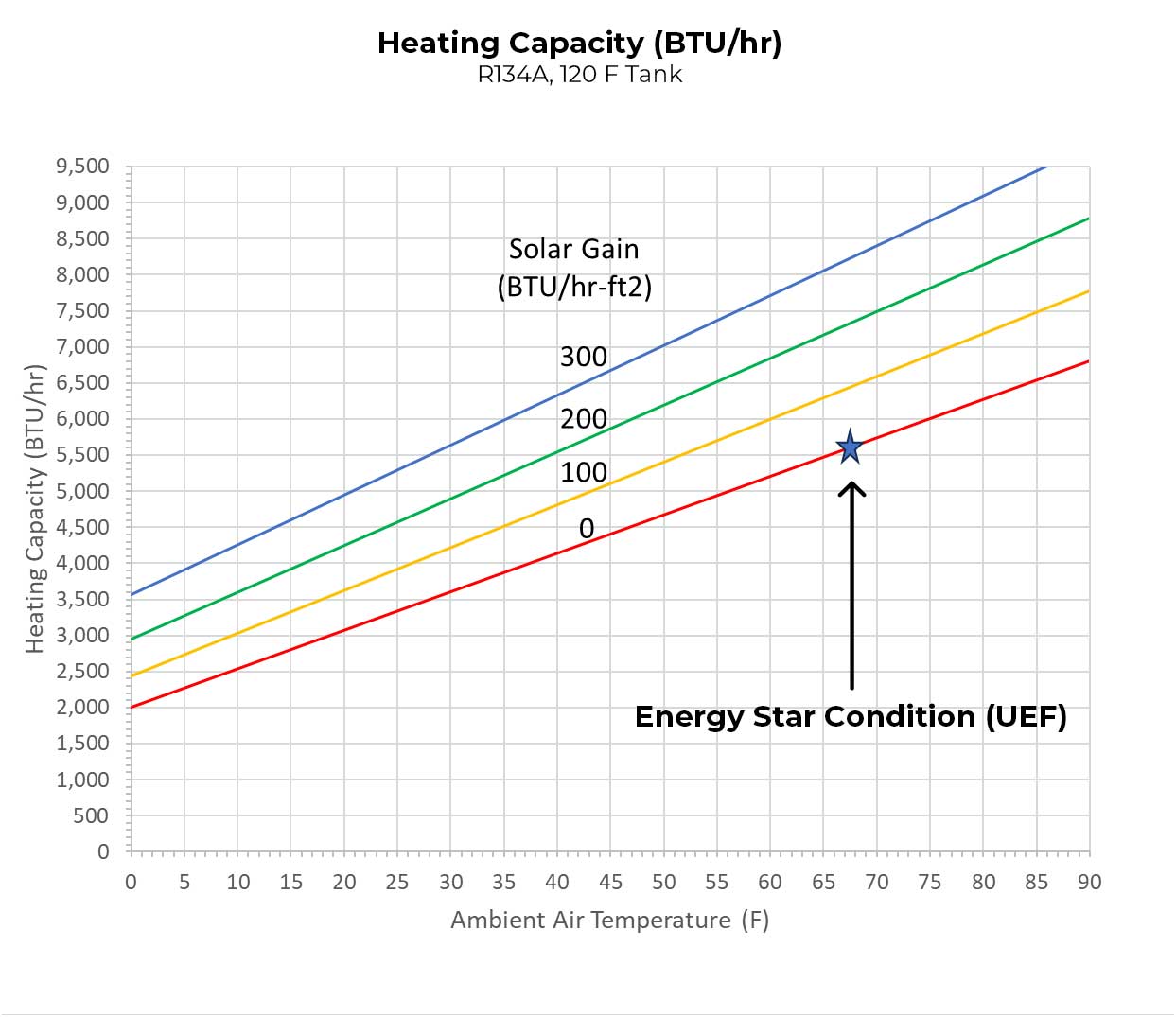SOLAR ASSISTED HEAT PUMPS
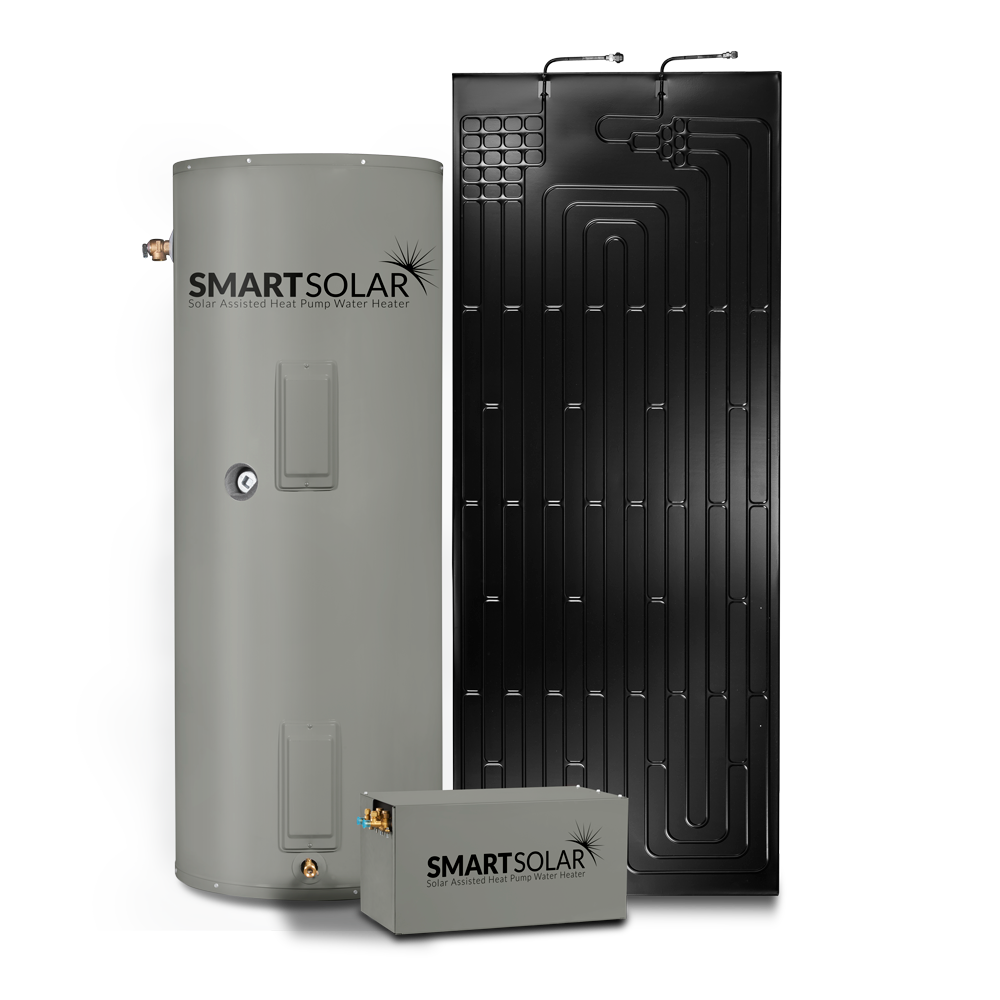
PRICE
Smart Solar systems are ENERGY STAR certified and qualify for a 30% federal tax credit and state rebate programs, yielding a net cost comparable with common “hybrid” heat pump water heaters.
REDUCED ELECTRICITY USE
Using renewable energy to reduce electric consumption by 50% or more (as compared to common electric resistance water heaters.)
NO FANS OR DRAINS NEEDED
Evaporator panels are mounted outside so no fans, filters, or drains are necessary thus reducing maintenance, and noise level.
INTERIOR TEMPERATURE IS NOT AFFECTED
Unlike common heat pump water heaters, heat is harvested from the exterior, so there is no need for interior air space from which to “steal” heat.
WHAT IS A SOLAR ASSISTED HEAT PUMP WATER HEATER?
A heat pump water heater is best described as ‘A Fridge in Reverse’. A household refrigerator uses an exposed panel to keep its contents cold. A heat pump water heater utilizes the same principle to achieve the opposite effect- circulating refrigerant liquid through a panel and absorbing rather than rejecting heat. Solar assisted heat pump water heaters are “split” systems that an exterior aluminum panel to absorb heat- eliminating the need for a fan or internal area from which to “steal” heat. These water heaters are an all-electric appliance using renewable energy to reduce electric consumption by over 50% (as compared to common electric resistance water heaters.)
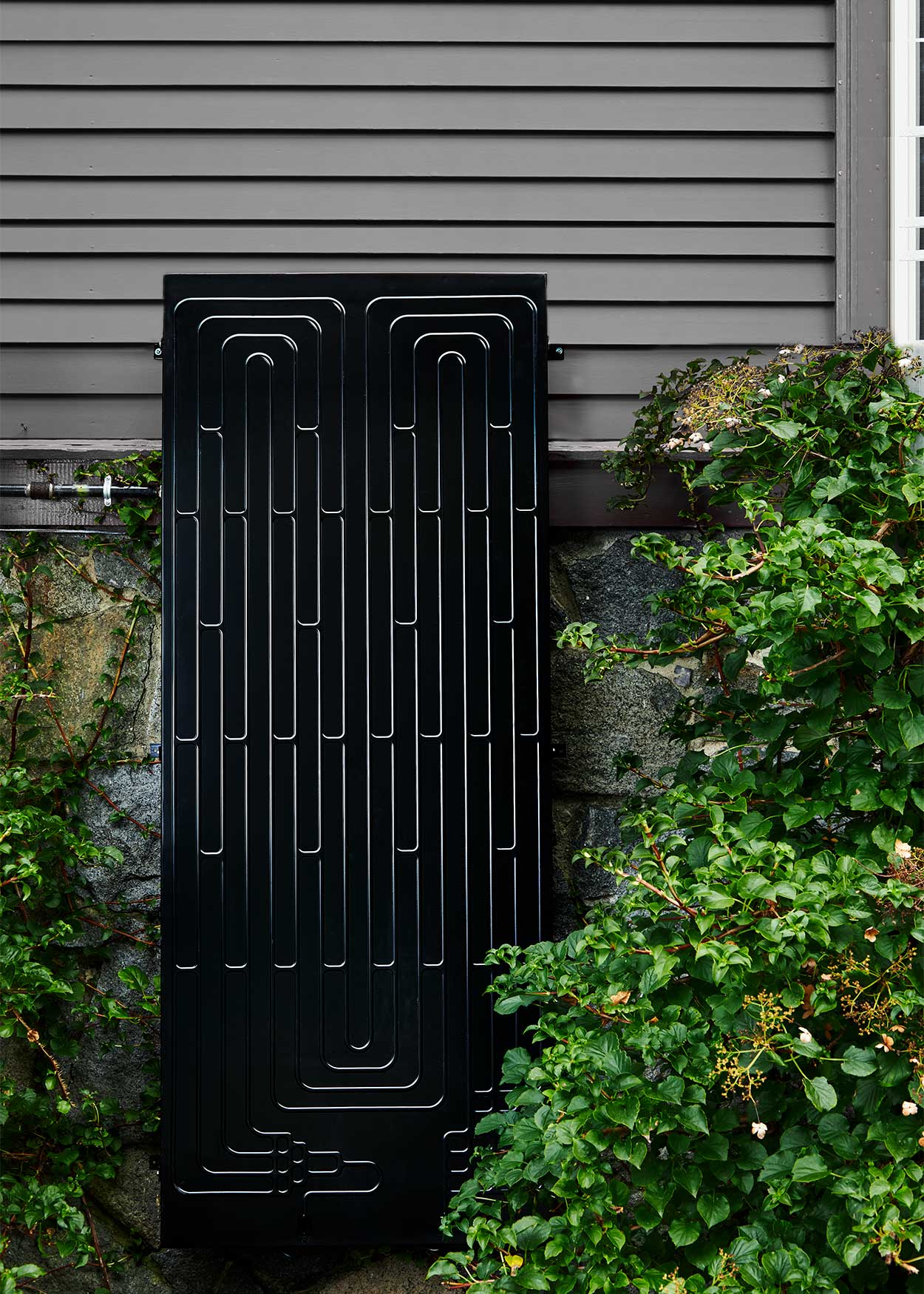
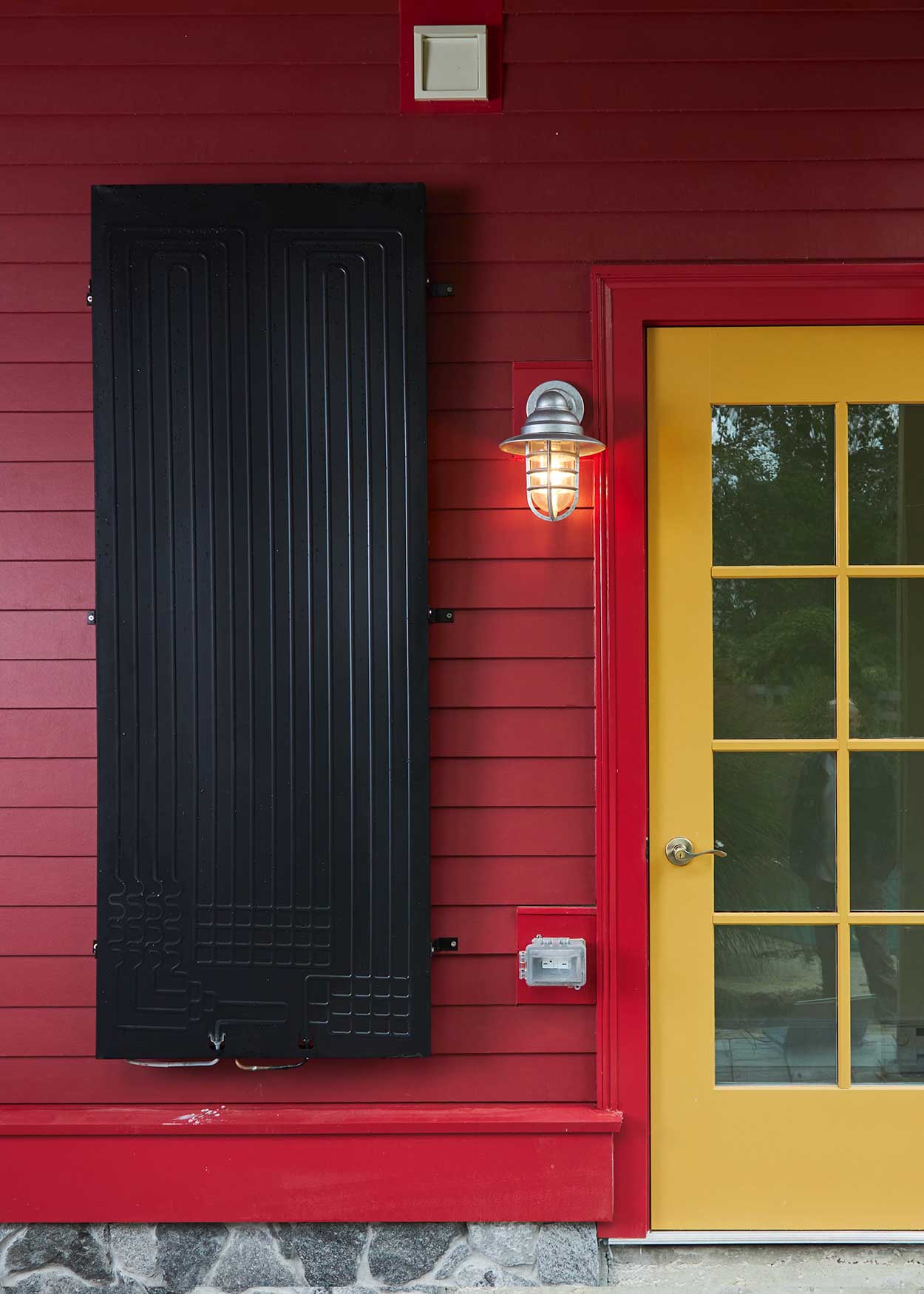
HOW DOES IT WORK?
Solar assisted heat pump water heaters are engineered to harness energy 24 hours a day, 365 days a year. Unlike solar panels, thermodynamic panels do not require direct sunlight to harvest energy. The thermodynamic panel acts as a heat exchanger, utilizing ambient air temperature (day and night in all weather conditions) to evaporate circulating refrigerant from a liquid to a gaseous state. The process starts when water heating is called for (when the water temperature within the tank drops 10°F below the target set point temperature). Liquid refrigerant is then circulated through the exterior thermodynamic panel at a temperature proportionally colder than the ambient air temperature. This is possible even on the coldest winter night. As the liquid refrigerant is circulated through the thermodynamic panel, heat moves from the comparatively warmer ambient air, heating the refrigerant past its relative boiling point and evaporating the refrigerant to its gaseous form. The gaseous state refrigerant is then returned (located on top of the tank) and compressed to rise the refrigerant temperature up to as high as 155°F, before being circulated through the condenser (a heating coil wrapped around the tank) where it heats potable water within the tank. As it transfers its heat, the refrigerant cools and condenses back to a liquid state, ready to repeat the process.
VERTICALLY
INTEGRATED
We have all of the relevant disciplines in-house
SYSTEM
MONITORING
The best monitoring capabilities that exist
PROBLEM
SOLVERS
No one else matches our capabilities and familiarity
EXTENDED
WARRANTIES
Robust hardware - built to last 20 years or more
SMART SOLAR vs. CONVENTIONAL “HYBRID” HEAT PUMP WATER HEATER
Bruce Hiles from New England Solar Hot Water talks about the implications of using conventional, ‘hybrid’ water heaters in a heated home compared to the Smart Solar solution.
Find out how easy it can be to switch to solar hot water, and how the benefits of renewable energy can help you save money and the environment.
Use the form below to sign-up for a FREE consultation!

